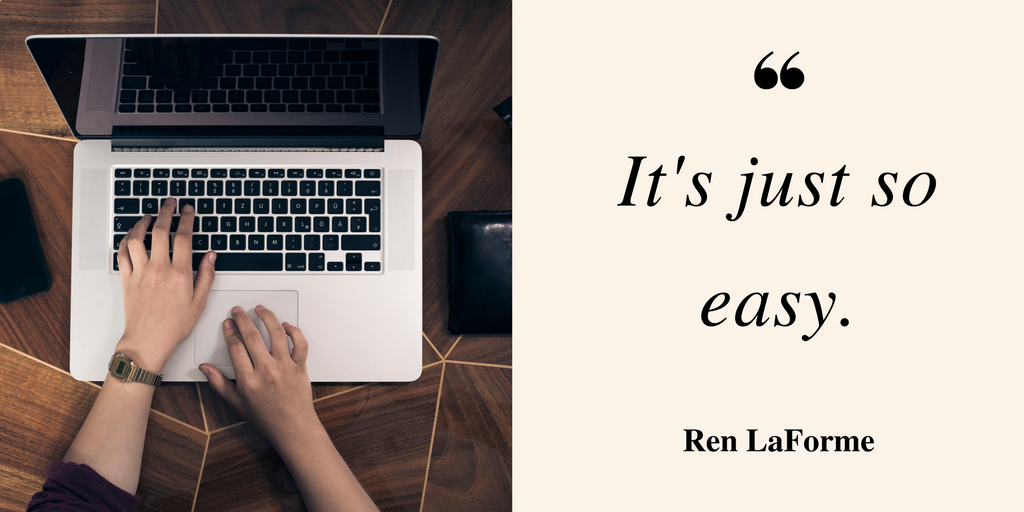Journalists are expected to juggle several different skills nowadays. This week’s tool, as my colleague Ren LaForme explains, offers an easy and free way to do more.
You found a big hit last week, and people were very excited about this tool that accurately transcribes interviews. We kind of shut the site down for awhile, right?
Yeah, we crashed their site. Actually, they took it down a couple days ago, and I think they’re working on buffing it up. We heard from a lot of people who had other really good voice-to-text tools, and we should talk about those for a second.
We heard from people saying VoiceBase is good, and also oTranscribe. I’ve used that one, it works really well, too. So in the event that Scribe is still down, those two are worth checking out.
What do you have for us this week?
I was a little surprised when Scribe took off because it seems like there are so many things like that out there. Maybe I’m in a bubble of tools and I don’t know things, but I want to talk about a tool I’ve known about forever. I think it’s a tool that you use pretty often, too.
What is it?
Let’s talk about Canva.
Oh, I love Canva!
If you don’t know what Canva is, it’s an image creation tool. It lets you pick from different templates, themes and sizes that are preset to fit various things such as social media.
It’s just so easy. What do you use it for?
I use it on a weekly basis for my newsletter and for putting my newsletter on the site. I make quote cards that are great for social and a summary of what’s in the newsletter for Poynter.org. It’s very easy to use, and I am not a great-with-graphics person.
Do those quote cards work pretty well for you?
Yes, they come across as very high-quality. I have to make them smaller on MailChimp so I don’t end up in people’s spam boxes. To me, they look great on mobile and on desktop.
I think that’s the great thing about Canva. If you are an expert Photoshop user, sure, fine, stick with that. But most of us are not. On my computer, Photoshop takes like two minutes to open.
I’m just gonna go to Canva, pick something with a template, make a new thing and have it exported by the time it takes Photoshop to open.
I think this works great when you don’t have an image with your story. There are obviously tons of stock photo sites and there are pros and cons to using those, but they tend to be pretty expensive. Canva lets you pull from their massive stock photo library, and the most they’ll ever charge you is a dollar.
Related Training: Social Media Visuals: Tips and Free Tools
If people aren’t familiar with Canva, what are some ways people can start using it?
I think the most important thing, and the best use I’ve seen for Canva, is creating social graphics. Getting people to read, view or interact with your story is now part of the storytelling process. You don’t send the paper to print and then go home and go to bed anymore.
You’ve got to get your story out there and get people’s attention. And the best way to do that is with whatever you can use that, as people are sliding their thumbs across the screen, makes them say, OK, I want to stop and see this.
With all of its templates and all of its really great designs, I think Canva is a really great way to do that, even if you are completely design inept.
I have had to learn to simplify on Canva. Do you have any basic tips on how to use this and not look like a total amateur?
Stick with their design templates at first. You’re going to look a little like other people out there, but just get a feel for how they look and what works best for them.
Learning from the experts is the best way to go.
Anything you don’t like about Canva?
It would be nice to have a little bit more control over things like text size. But it’s free, so I really can’t complain.
I think one of the reasons that this tool and tools like it are important gets back to something you already said: It’s our job now not just to produce the journalism but to help it spread, and this is a way you can do that.
Right, and editors will love you for adding visuals to your stories, and social media editors will love you for making them shareable. It’s a win-win, especially because it only takes a couple minutes.
I just made a Canva for social media with one of your quotes and very basic template. It took me about five minutes.
See? So easy. Nobody has any excuse to publish a story without visuals anymore.

Editor’s note: This is the latest in a series of articles that highlight digital tools for journalists. You can read the others here. Got a tool we should talk about? Let Ren know!
Learn more about journalism tools with Try This! — Tools for Journalism. Try This! is powered by Google News Lab. It is also supported by the American Press Institute and the John S. and James L. Knight Foundation.







